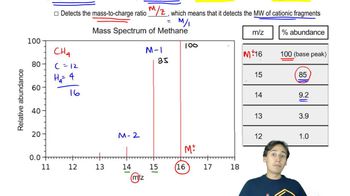The reaction of (Z)-2-pentene with water and a trace of H2SO4 forms two products. Identify the products from their mass spectra.
<IMAGE>
 Verified step by step guidance
Verified step by step guidance Verified video answer for a similar problem:
Verified video answer for a similar problem:



 4:28m
4:28mMaster Ionization Potentials with a bite sized video explanation from Johnny
Start learning